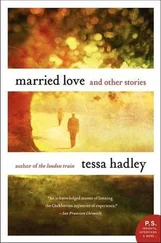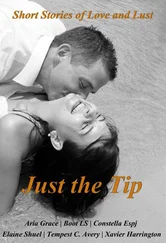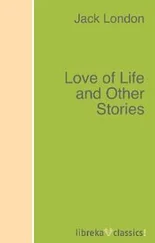Christina Balit - Treasury of Norse Mythology - Stories of Intrigue, Trickery, Love, and Revenge
Здесь есть возможность читать онлайн «Christina Balit - Treasury of Norse Mythology - Stories of Intrigue, Trickery, Love, and Revenge» — ознакомительный отрывок электронной книги совершенно бесплатно, а после прочтения отрывка купить полную версию. В некоторых случаях можно слушать аудио, скачать через торрент в формате fb2 и присутствует краткое содержание. Жанр: unrecognised, на английском языке. Описание произведения, (предисловие) а так же отзывы посетителей доступны на портале библиотеки ЛибКат.
- Название:Treasury of Norse Mythology: Stories of Intrigue, Trickery, Love, and Revenge
- Автор:
- Жанр:
- Год:неизвестен
- ISBN:нет данных
- Рейтинг книги:4 / 5. Голосов: 1
-
Избранное:Добавить в избранное
- Отзывы:
-
Ваша оценка:
- 80
- 1
- 2
- 3
- 4
- 5
Treasury of Norse Mythology: Stories of Intrigue, Trickery, Love, and Revenge: краткое содержание, описание и аннотация
Предлагаем к чтению аннотацию, описание, краткое содержание или предисловие (зависит от того, что написал сам автор книги «Treasury of Norse Mythology: Stories of Intrigue, Trickery, Love, and Revenge»). Если вы не нашли необходимую информацию о книге — напишите в комментариях, мы постараемся отыскать её.
Treasury of Norse Mythology: Stories of Intrigue, Trickery, Love, and Revenge — читать онлайн ознакомительный отрывок
Ниже представлен текст книги, разбитый по страницам. Система сохранения места последней прочитанной страницы, позволяет с удобством читать онлайн бесплатно книгу «Treasury of Norse Mythology: Stories of Intrigue, Trickery, Love, and Revenge», без необходимости каждый раз заново искать на чём Вы остановились. Поставьте закладку, и сможете в любой момент перейти на страницу, на которой закончили чтение.
Интервал:
Закладка:
The ice of Ginnungagap kept melting as the air grew milder. It formed a cow, a huge good-natured beast, from whose udders spurted four milk rivers. Her name was Audhumla. She stood in the middle of the glistening blocks of salty ice, and like any good cow, she immediately started licking. She licked all day long, until, under her great rasping tongue, hair appeared out of the ice. She licked all the next day, until a whole head appeared. By the evening of the third day, an entire being stood there. He was Buri, the first god.
Buri soon had a son named Bor, and Bor married the daughter of a frost giant and fathered three sons, the grandchildren of Buri: Odin and Vili and Ve.
Now the trouble began: The sons of Bor and the gang of frost giants hated each other. Inevitably, perhaps, for the world was still such an inhospitable place, ice on one side, fire on the other, that hate found a natural home there. Bor’s sons killed Ymir.
The blood of that ancient frost giant surged out over Ginnungagap and drowned all the other frost giants—all but two: Bergelmir and his wife. They got in their boat and let the gory current carry them where it would.
But now the sons of Bor found themselves with this enormous corpse, and they recognized the possibilities: Life could come from death. That could be the circle of things. So they used every part of the slain Ymir to create many worlds. His blood made seas and lakes. His flesh made earth. His bones formed mountains. His teeth became rocks and pebbles.
Ymir’s hollowed-out skull made the sky, and the three sons of Bor took the maggots crawling in Ymir’s rotted carcass and created small creatures called dwarfs. They set a dwarf under each of the four corners of this skull-sky to hold it up, arching over the earth. One dwarf was called Nordri—North; one, Austri—East; one, Sudri—South; one, Vestri—West. The other dwarfs ran off to live in the rocky caves. They became skilled craftsmen. It was they who wrought the decorative treasures of the gods.

The three sons of Bor killed the frost giant Ymir and used his body parts to create worlds and the objects within those worlds. From his skull they made the sky.
But there was still more of Ymir’s body to exploit. The sons of Bor threw his brains up into the sky to form clouds. They stole embers from Muspell and created the sun and moon, and from the sparks they made all the many stars.
With Ymir’s eyebrows they made a wall to keep out the giants. The land outside that wall was called Jotunheim, and the only two giants left alive settled there. The land inside that wall was called Midgard.
So now the land of Midgard was protected from giants, from ice, from fire, and it had sweet air above. It grew green with leeks and fragrant clover. Trees shot up, spruce and elm and ash. The gods, who had grown in number, wandered over this land. From two pieces of driftwood on the seashore, three gods created a man and a woman, the first humans. Odin put his mouth to theirs and gave them Ond—Breath—so they could live and love. Hoenir gave them Od—Mind—so they could understand and laugh. Lodur gave them La—Sense—so they could appreciate beauty. And that lone man, Ask, and that lone woman, Embla, set about having children to populate the land of Midgard.
The giantess Night, of the blackest hair, and her son Day, of the blondest hair, rode chariots across the sky. Later their chariots would be guided by humans, and the savage wolf Skoll with his brother wolf would chase them.
Meanwhile, the giants were having children, too. One giant woman had raven black hair and skin the hue of tree bark. To touch her was to shiver. Her name was Night. She had a son with hair that looked like the tips of the flames in Muspell and skin the color of Audhumla’s milk. To touch him was to smile. His name was Day. Their contrast fascinated Odin—he couldn’t resist; he set Night and her son Day in two chariots that race across the sky, the one after the other. Night’s chariot horse is Hrimfaxi, with frost clumped in his mane. Day’s chariot horse is Skinfaxi, with sparkles flying from his mane.
A human living in Midgard had children that were stunningly beautiful, as beautiful as anything the gods had created. He called his daughter Sun and his son Moon. Such audacity was a grave mistake. In fury, the sons of Bor snatched them and made Sun guide the chariot of Day and Moon guide the chariot of Night. The chariots are always in a hurry because each is chased by a savage wolf, sons of a giantess witch who lives in Ironwood Forest to the east of Midgard. The wolf Hati Hrodvitnisson goes after Moon—he will run Moon down in the end, at the cosmic battle of Ragnarok. The wolf Skoll snaps and growls behind Sun. In the end, he will catch her, too.
That’s how it all began. That’s how it all will end.
One-eyed Odin presides over Asgard, the world of the Aesir gods, as a guardian father—the Allfather. A flaming bridge, Bifrost, leads from Midgard, the world of the humans, up past the wall that surrounds Asgard.
THE COSMOS
The cosmos consisted of separate worlds arranged on three levels. In the middle level many creatures made a home. Humans had Midgard. Frost giants had Jotunheim.
The gods needed a home, too. Now up on the top level of the cosmos there was only one world at this point: Alfheim. That’s where the light elves lived, happy souls. So the sons of Bor chose to build a world for the gods up there, beside Alfheim. They named the world of the gods Asgard. It had spreading green meadows and splendid meeting halls.
By now the deities had multiplied and they had welcomed into their group various other creatures, friendly giants and elves. Odin was looked at as the father god; they called him Allfather. And the deities of this huge family called themselves the Aesir. They built a flaming rainbow bridge called Bifrost that spanned the distance from Midgard up to Asgard. Between Bifrost’s flames and the high rock wall that surrounded the world, others were blocked from invading Asgard. But Bifrost’s flames welcomed the Aesir; they simply shimmered in three colors under the gods’ galloping horses as they passed across into their new dwelling.
The Aesir built a hall from a single slab of gold, called Gladsheim, and it served as their court. They built a hall specifically for the goddesses, called Vingolf. They built a home with a forge and made hammers, tongs, anvils, all manner of tools, and furnished it well with goods of stone and wood and metal. The dishes they ate from were gold.
Odin built his own hall, Valaskjalf, and thatched it with sheer silver. He sat there on a high seat called Hlidskjalf, from which he could look out over all the worlds in the cosmos.
Those worlds now included one more: Vanaheim. The gods had split into two groups, the Aesir, who inhabited Asgard, and the Vanir, who lived in Vanaheim. The Aesir saw themselves as the true rulers of the cosmos. Given that attitude, it was no surprise that the feelings between the Aesir and the Vanir were less than friendly. So Odin watched Vanaheim with special care.
Odin ruled from his high seat, a helmet on his head and a raven on each shoulder. At his feet crouched two wolves, Geri and Freki, ravenous beasts who ate whatever food Odin dropped for them, which was abundant, since Odin himself lived only on wine. But these two wolves were also rumored to feed on nasty things—maybe even the corpses of men.
Center of the Cosmos
An ash tree stands in a field.
The center of the Norse cosmos was an ash tree named Yggdrasil, a legend that may have its origin in the Arctic Sami people. They build a house with hide stretched across poles. So, a tree was the center of the home. That Yggdrasil was an ash tree makes sense. Ash resists splitting, so it makes good bows and tool handles. It’s springy, so it makes good mountain-walking sticks. It burns well, even when freshly cut. And it’s very hard, so it doesn’t wear out quickly.
Читать дальшеИнтервал:
Закладка:
Похожие книги на «Treasury of Norse Mythology: Stories of Intrigue, Trickery, Love, and Revenge»
Представляем Вашему вниманию похожие книги на «Treasury of Norse Mythology: Stories of Intrigue, Trickery, Love, and Revenge» списком для выбора. Мы отобрали схожую по названию и смыслу литературу в надежде предоставить читателям больше вариантов отыскать новые, интересные, ещё непрочитанные произведения.
Обсуждение, отзывы о книге «Treasury of Norse Mythology: Stories of Intrigue, Trickery, Love, and Revenge» и просто собственные мнения читателей. Оставьте ваши комментарии, напишите, что Вы думаете о произведении, его смысле или главных героях. Укажите что конкретно понравилось, а что нет, и почему Вы так считаете.












